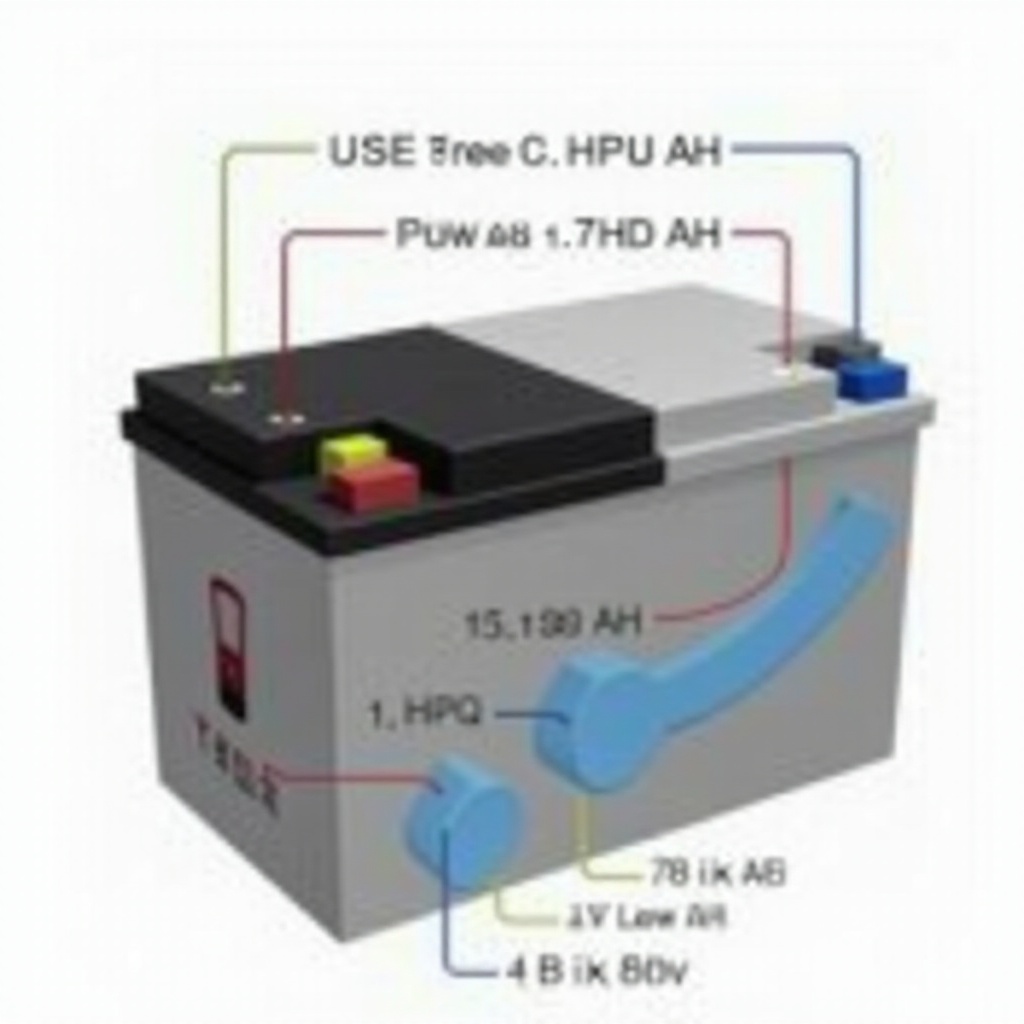Introduction
Understanding Tesla battery capacities is crucial for both current and prospective Tesla owners. Have you ever wondered how many Ampere-Hours (Ah) a Tesla battery has? Knowing this can provide insights into the vehicle’s overall performance, range, and efficiency. This guide will help you understand the concept of Ampere-Hours, its significance in battery technology, and how it is calculated for Tesla batteries.

What Are Ampere-Hours (Ah)?
Ampere-Hours (Ah) is a unit of electric charge. It represents the amount of electric charge transferred by a steady current of one ampere flowing for one hour. Hence, if a battery has a rating of 100 Ah, it means it can produce a current of 100 amperes for one hour or 10 amperes for 10 hours. Ah is a critical measure in battery capacity since it directly relates to how long the battery can run before needing a recharge.
Understanding Ah is essential for evaluating the effectiveness of battery-operated systems. For electric vehicles like Teslas, a higher Ah rating means the battery can provide a substantial amount of power over time, leading to higher vehicle range and better performance.

Understanding Battery Capacity: kWh vs. Ah
Battery capacity in electric vehicles is often represented in kilowatt-hours (kWh). While kWh relates to the total energy that the battery can store, Ah focuses on the battery’s ability to deliver that power over time.
-
Kilowatt-Hours (kWh): It measures the energy available in the battery, similar to how gas in a fuel tank works. For example, if a Tesla battery is 100 kWh, it can theoretically power a load of 1,000 watts for 100 hours.
-
Ampere-Hours (Ah): It measures the charge capacity of the battery. To convert kWh to Ah, you first convert kWh to watts (W), then divide by the voltage of the battery.
Given the importance of voltage in these calculations, kWh and Ah aren’t directly interchangeable but are related.
Tesla Battery Technology: An Overview
Tesla leads the electric vehicle industry with innovative battery technology. Their success relies heavily on advancements in battery design, production, and integration. Tesla’s Lithium-Ion battery packs are the core of their electric vehicles, providing high energy density, long life, and efficient power management.
These batteries are composed of thousands of individual cells, typically grouped into modules. Tesla’s proprietary battery management system ensures optimal performance and longevity by controlling the charge and discharge cycles of these cells.
Key advancements in Tesla’s battery technology include:
– High energy density to store more power within limited space.
– Efficient thermal management for maintaining optimal operating temperatures.
– Sophisticated software to monitor and balance the state of charge across all cells.

Tesla Model Battery Specifications
Tesla produces a range of models, each with different battery capacities and specifications. Knowing these capacities helps in comparing vehicle performance, range, and long-term battery health.
Tesla Model S
The Model S Long Range variant has a 100 kWh battery pack. Depending on the voltage (about 400V), it could equate to around 250 Ah.
Tesla Model 3
The Model 3 Standard Range Plus has a smaller 55 kWh battery, equating to approximately 137.5 Ah considering a voltage around 400V.
Tesla Model X
The Model X, similar to the Model S, houses a 100 kWh battery, potentially translating to around 250 Ah.
Tesla Model Y
Model Y Long Range features a 75 kWh battery, likely providing around 187.5 Ah.
Calculating Ah in Tesla Batteries
To convert kWh to Ah, the methodology involves the battery voltage. Here’s the step-by-step process:
Methodology to Calculate Ah from kWh
- Identify the battery capacity in kWh.
- Convert kWh to Wh by multiplying by 1,000.
- Divide the Wh by the battery’s voltage (usually around 400V for Teslas).
Example Calculations for Different Models
- Model S (100 kWh): 100,000 Wh / 400V = 250 Ah
- Model 3 (55 kWh): 55,000 Wh / 400V = 137.5 Ah
- Model X (100 kWh): 100,000 Wh / 400V = 250 Ah
- Model Y (75 kWh): 75,000 Wh / 400V = 187.5 Ah
Importance of Ah in Tesla Battery Performance
Understanding Ampere-Hours (Ah) in Tesla batteries is significant as it impacts both the range and overall performance. Higher Ah batteries can handle more significant loads and sustain high power outputs, translating to better acceleration, longer range, and improved efficiency.
The Ah capacity also determines the longevity of the battery under regular usage. Batteries with higher Ah ratings typically experience less strain during high-power demands, potentially leading to a longer lifecycle.
Future Trends in Tesla Battery Technology
Tesla isn’t just stopping at today’s battery tech. The company continuously works on innovations like the 4680 cells, offering higher energy density, improved thermal management, and reduced costs. These cells are expected to revolutionize battery capacities and performance metrics further, pushing the boundaries of what’s possible with electric vehicles.
Future advancements might focus on solid-state batteries, which promise higher energy densities and safety benefits.
Conclusion
Knowing how many Ampere-Hours (Ah) a Tesla battery holds provides useful insights into the vehicle’s range and performance. By understanding the relationship between kWh and Ah and tracking Tesla’s battery technology advancements, owners and enthusiasts can better appreciate these engineering marvels.
Frequently Asked Questions
How does Ah impact Tesla’s vehicle range?
Ah affects the amount of energy the battery can supply over time, directly influencing the vehicle range.
How can I check the Ah of my Tesla battery?
You can calculate it using the formula kWh divided by voltage or refer to your vehicle’s specifications.
Are higher Ah batteries better for long trips?
Yes, higher Ah batteries can support extended range and maintain performance over long distances.


